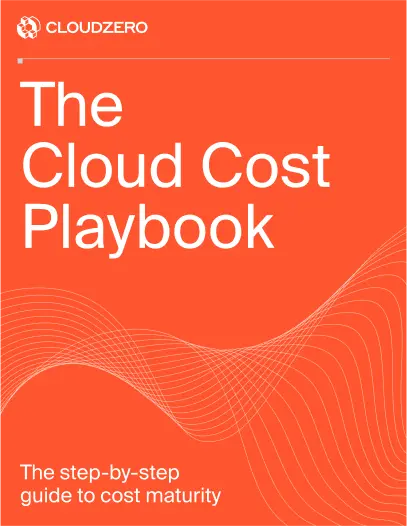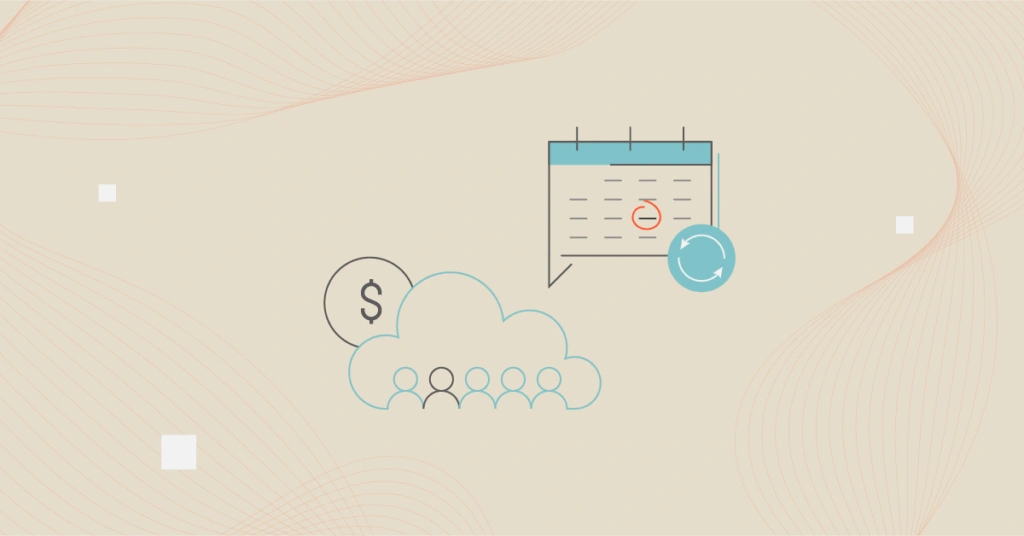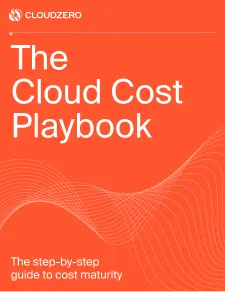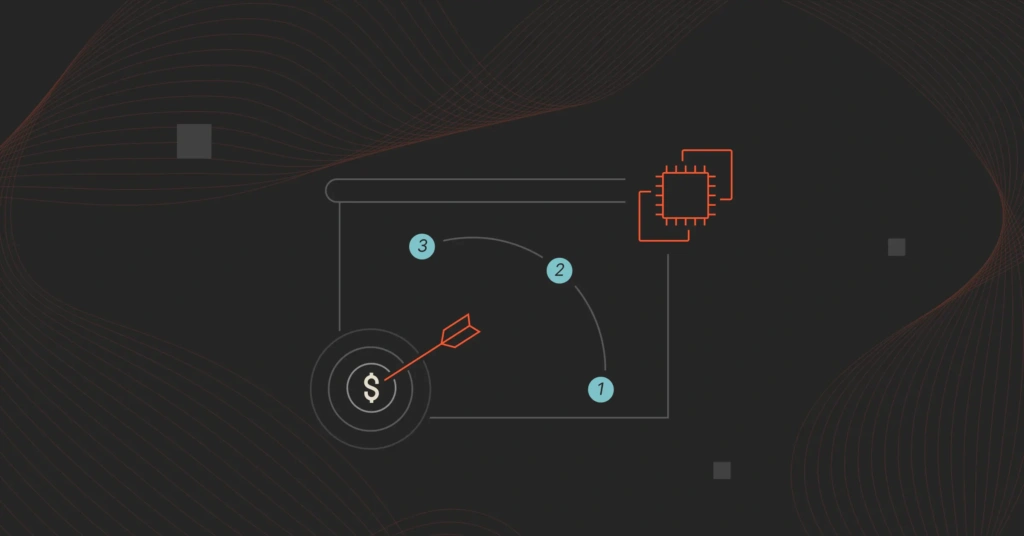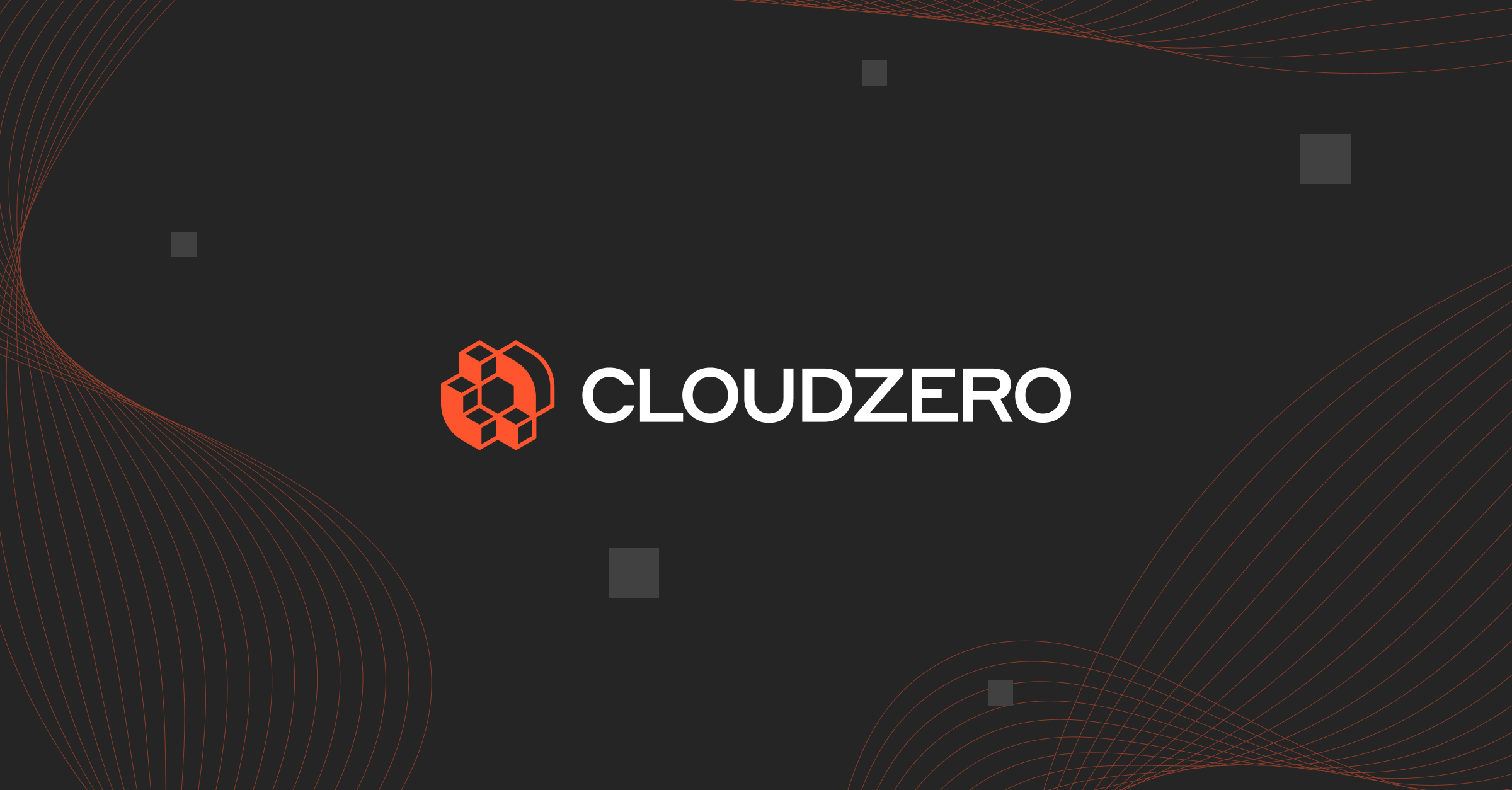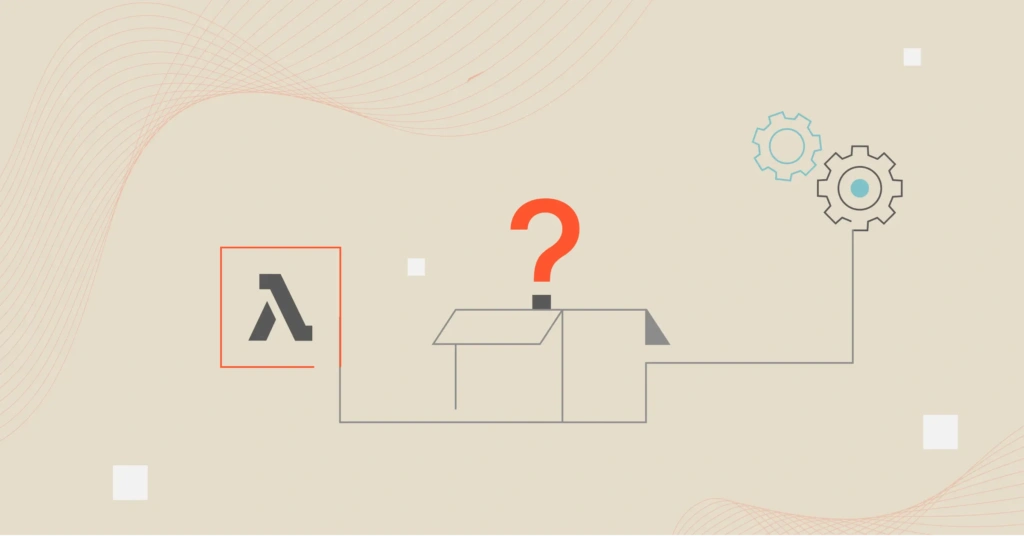If you’ve ever stared at your cloud bill and thought, “How on earth did this get so crazy?” — you’re not alone.
Especially when AI workloads come into play, those GPU costs can feel like a runaway train.
The good news? It doesn’t have to be that way.
The magic happens when you’ve got someone from every team that cares about smart growth (FinOps, AI/ML, product, engineering, whatever) all in one room, looking at the same set of numbers.
At the companies that do this well, you see the difference: better margins, fewer surprises, and faster decisions when something goes sideways. Cloud costs become predictable. And everyone starts pulling in the same direction.
Monthly cloud cost syncs aren’t just a nice-to-have — they’re how you stay ahead.
But if you’ve been in or run these meetings, you know they can sometimes drift off course or turn into a boring status update that nobody really acts on.
So how do you keep them sharp, useful, and maybe even (dare I say it) fun? Here’s how to run monthly check-ins that actually help.
Who Needs To Be In The Room?
Short answer: not everyone. Just the right people.
The most effective monthly cloud cost meetings bring together one key representative from each team that plays a role in cloud spend or cares about growth efficiency — not just FinOps and ML.
That usually means:
- A FinOps lead. Someone who lives in the numbers and can translate cost trends.
- An AI/ML engineer. Ideally one close to model development and GPU usage.
- A product manager. There to provide context on roadmap priorities and trade-offs.
- An engineering manager. Who can speak to implementation details and team bandwidth.
- A finance stakeholder or exec sponsor. Especially if you’re close to budget or headcount planning.
Best practice is to ask each department to appoint a dedicated cloud cost liaison. This person doesn’t need to be a cloud economist. They just need enough visibility and influence to speak for their team, spot inefficiencies, and follow through on action items.
Not sure who should own what? Here’s a breakdown of typical responsibilities by role:
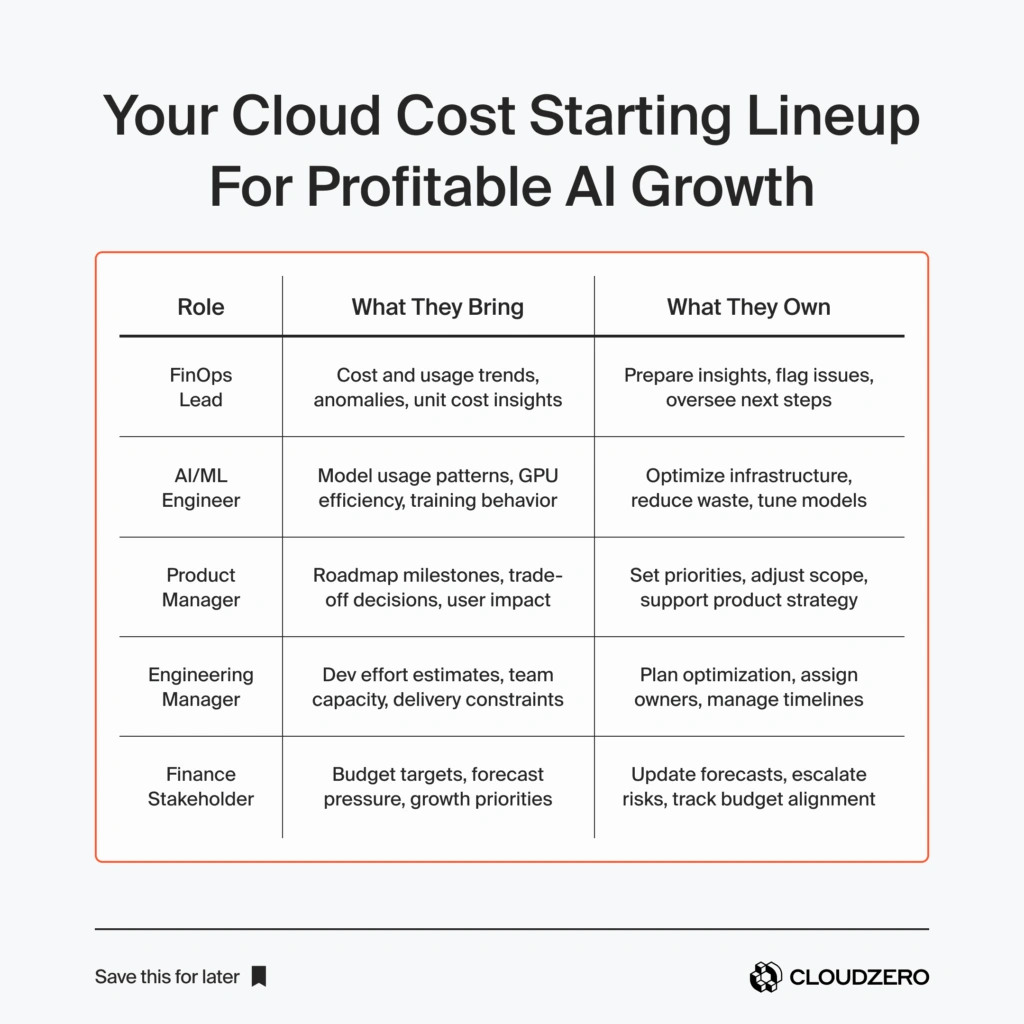
Keeping the meeting lean and focused like this means fewer pointless 15-person Zoom calls. Everyone knows why they’re there and what they’re responsible for — and if something needs fixing, there’s a clear owner.
With the right people in the room, the next step is making sure your meeting time is spent wisely.
The Agenda: Keep It Lean And Mean
This isn’t just another meeting. It’s a strategic touchpoint for one of your top three budget items.
If you’re trying to squeeze it into 30 minutes, that’s a red flag. It probably means you’re not taking it seriously enough — or you’re not giving teams the space to align, dig in, and actually take action.
60 minutes, once a month. That’s the commitment. You’ll be shocked at what just one focused hour can surface.
Here’s a high-impact agenda that keeps things moving without cutting corners:
- Kickoff and Context (5 min): Quick reminder of the meeting’s purpose: align teams around cloud spend trends, flag issues early, and drive follow-through.
- Cloud Cost Overview (15 min): Review top-level trends across AWS, Azure, and GCP. Highlight budget shifts, unexpected spikes, or any oddball usage. Keep it visual — dashboards should be sent the day before.
- AI/ML Cost Deep Dive (15 min): Get into the weeds on GPU usage, model training, inference costs, and anything AI-specific. Track per-model or per-feature costs if you can. Look for waste, overprovisioning, and cost anomalies.
- Team Check-Ins (15 min): Each cloud cost liaison shares a quick update: one win, one risk, one thing they’re tracking. Short and sweet — about two to three minutes each.
- Action Items and Next Steps (10 min): Decide what’s happening next, who’s doing it, and when it’s due. Make sure action items live somewhere visible and tied to your FinOps tooling or dashboard.
That’s your high-impact agenda — and here’s how it all comes together. This visual lays out what to do before, during, and after the meeting to keep it sharp, focused, and worth everyone’s time.

Stick to that structure, and you’ll already be ahead of most teams. But a few extra tips can take it even further.
Best Practices To Keep The Meeting Effective
A few tricks from the trenches:
- Keep it to 60 minutes, max. Cloud costs are a top-three budget item — give it the time it deserves, but don’t let it drag. An hour is the sweet spot.
- Appoint a liaison from each department. One person per team — not ten. Keeps the meeting focused and cuts down on the “too many cooks” effect.
- Rotate who leads the meeting. It keeps things fresh and spreads ownership. Plus, it helps avoid the dreaded “FinOps monologue.”
- Use a shared agenda doc everyone can add to beforehand. No surprises. This gets people thinking ahead — and cuts the awkward silence at the start.
- Send a dashboard report at least 24 hours in advance. Give people time to digest the data before they show up. No one wants to react to charts they’re seeing for the first time.
- Encourage questions but steer clear of rabbit holes. Curiosity is great. Tangents that eat 30 minutes? Not so much. It’s OK to table topics for a follow-up.
- Try to meet in person if you can. People actually pay attention when they’re not on mute with 12 tabs open. Face-to-face syncs lead to more engaged conversations and better decisions.
- Always end with clear owners on action items. “We’ll get back to it” is how cost savings die. Every meeting should end with a who, what, and when — and someone making sure it happens.
The Dashboard That Pulls It All Together
Nothing kills a good discussion like fuzzy data. Your meeting’s secret weapon: a cloud cost dashboard that lays out the real story in a glance. Ideally, it should show:
- AI spend broken down by team or model. Who’s burning what?
- Cost per inference and training run. This is the nitty-gritty of AI efficiency.
- Alerts on budget overshoots or weird spikes. Nobody likes surprises.
- Trends and anomalies over time. Because what happened last month matters.
You’ve got the data, the visuals, the insights. Now comes the real test: will anyone do anything about it?
Turning Insight Into A Competitive Edge
You can have a perfect agenda, a killer dashboard, and all the right people in the room — but it still won’t matter if no one follows through.
That’s where most teams slip: they treat cloud cost syncs as reporting rituals instead of decision-making moments.
Awareness is easy. Accountability and alignment are where the work gets real.
These meetings need to be more than just status updates. They should create a rhythm where every anomaly sparks discussion, and every discussion leads to a decision.
I call this rhythm the Cloud Cost Loop — a continuous cycle of insight and action that helps AI teams scale efficiently and grow the business.
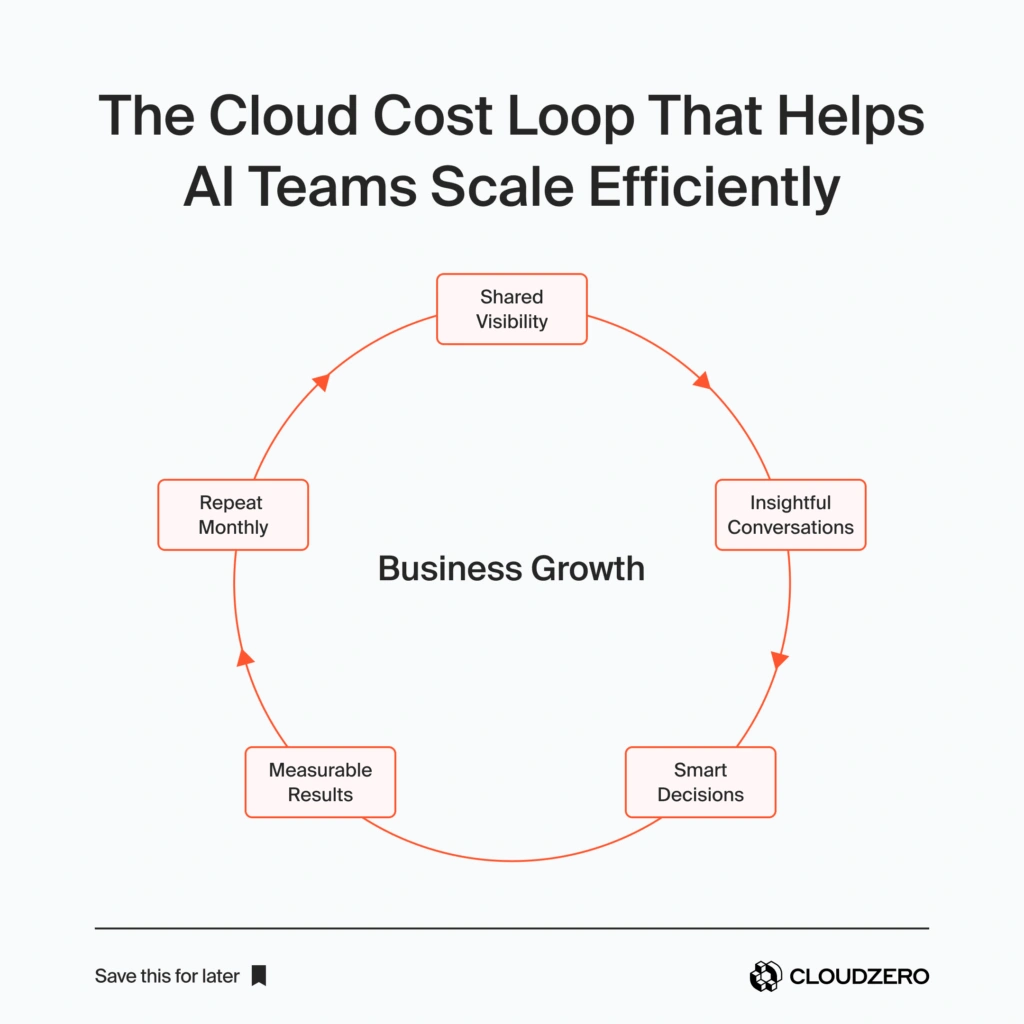
You’ll know it’s working when engineers bring up costs before finance does. When product managers flag an expensive model before launch. When “surprise cloud bill” becomes a phrase you haven’t heard in months.
Because done right, these meetings don’t just prevent budget overruns. They build a muscle (a culture) that turns cloud cost from overhead into strategy. From complexity into clarity. From a line item into a competitive edge.
And in AI, that’s not just efficiency. That’s survival.
